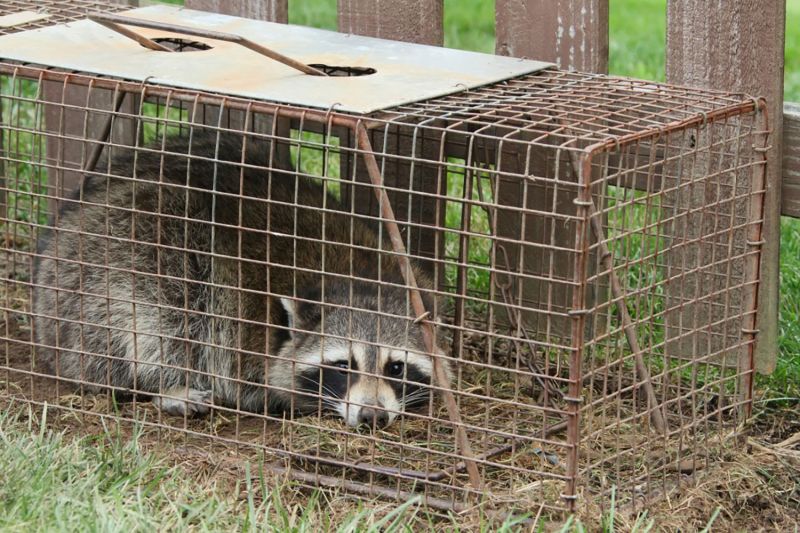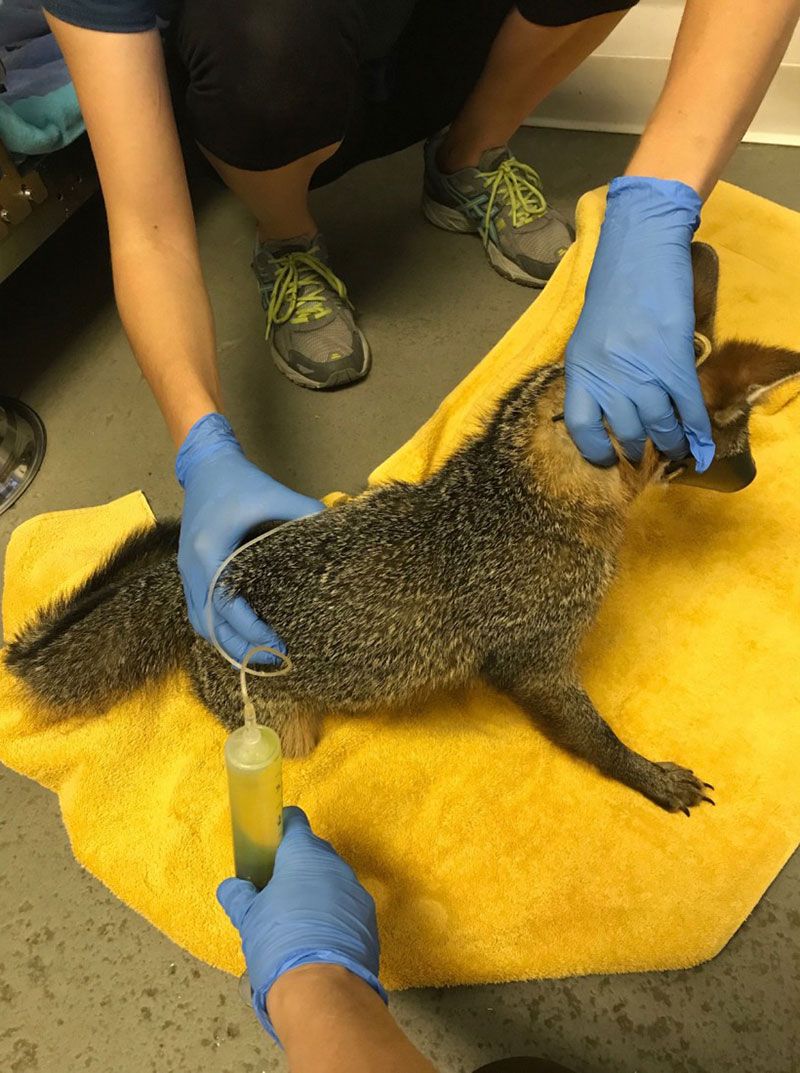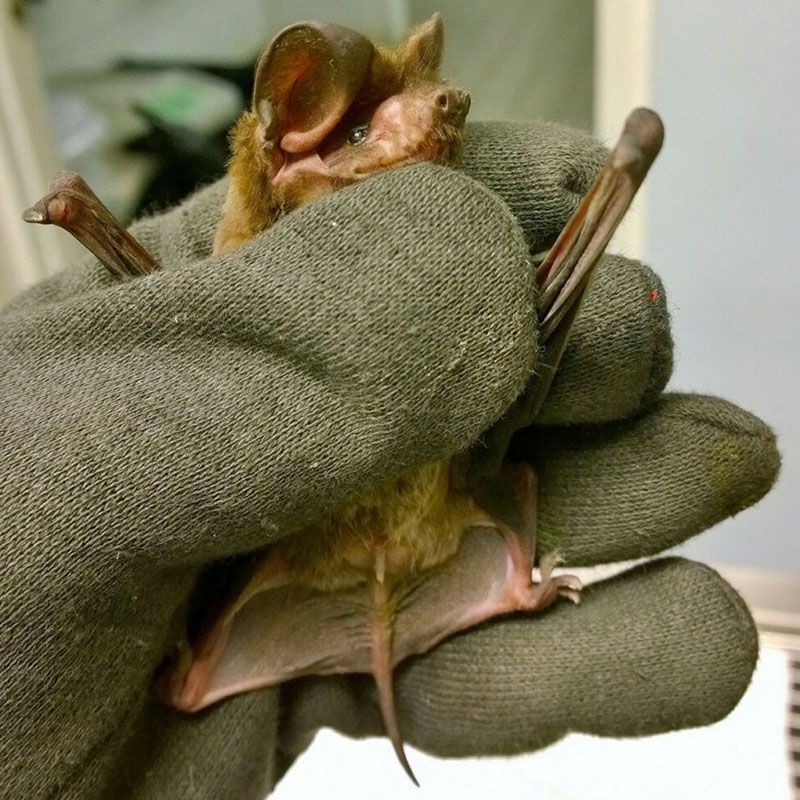Helping your community’s forgotten animals: Wildlife
How one Virginia community connects the dots
May 31, 2018

This is the first in a series of three blogs showcasing how our Wild Neighbors partners have implemented one or more of the criteria of our Wild Neighbors pledge.
Located just outside of the nation’s capital, Virginia’s Arlington County is a population-dense and urban environment with approximately 230,000 full-time residents and millions of visitors annually. The Animal Welfare League of Arlington (AWLA) hosts animal control there through a contract with Arlington County. All the animal resources go through AWLA—including all calls for service from the public. Each month, more than 50 percent of the calls for service we receive are wildlife-related, from an animal hit by a car or injured, to orphaned wildlife found in the community, to wild animals having made their way into people’s homes or interacted with people’s pets.
To put this in perspective, in 2017, Arlington Animal Control had 3,335 cases, of which 1,619 involved wildlife. By comparison, with respect to domestic animals, we had 510 bite cases, 661 stray animal cases and 165 cruelty/neglect cases, for a total of 1,336. That means we had more wildlife calls than bites, stray animals and cruelty/neglect cases combined! Serving a community with these needs and concerns in such an urban environment by establishing a humane wildlife approach has not only saved our officers’ time, but supports AWLA’s overall mission to improve the lives of animals.

One of the wildlife issues that comes up a lot involves rabies-vector species. We have a policy in place for handling these animals, which are typically bats, foxes and raccoons. Our strict adherence to best practices means we do not need to indiscriminately euthanize wildlife. This helps with overall mission coherence as well as staff morale and public expectations. We sign up to be animal control officers because of a deep-rooted love for animals and a desire to help them and the community. Having this policy accomplishes both of those goals—we love what we do, and members of the public call because they trust us and how we manage each animal that comes into our care.
We didn’t always have something so comprehensive, but over time we developed our policy in conjunction with communicable disease specialists from the county’s health department. When I joined the AWLA team approximately six years ago, we had a few policies in place, but they were often unclear and ineffective. Figuring out how to apply them usually required a bunch of phone calls and emails; typically, the animal involved was eventually euthanized. This policy had no streamlined process: it did not tell officers what questions they needed to ask, what information they needed to provide to the on-duty nurse for the health department, nor did it give officers any discretion to determine whether rabies exposure had occurred. All these factors ultimately put wildlife in limbo. This was especially true for bat exposures, since the guidelines around what qualifies as exposure are more complex.
We changed our relationship with our local health department representatives by sitting down and discussing what information was needed to ultimately determine rabies exposure. We then took the information we’d gleaned in those discussions and molded it into guidelines for animal control officers in the field.
This was actually a relatively simple process. If you, as an officer, go through the list of potential chances for exposure and the answers are all “no,” then there is no exposure and the animal can be released or sent to rehab.

Our bat criteria, for example, asked these questions:
- Was the individual bitten and knows he/she has been bitten?
- Did the individual have direct contact with a bat and cannot be sure he/she wasn’t bitten or had contact with saliva?
- Did the individual wake up to find a bat in the room they were in? Was the bat in an area where it had access to other open rooms where people were sleeping?
- Did the individual walk into a room and see a bat in the room where there is also a small child, domestic pet or mentally impaired person who cannot articulate whether or not he/she had been bitten or had direct contact? Was the bat in an area that had access to any of the above?
- Did the individual visually witness contact between the bat and a domestic pet? Was the bat found in an area with a domestic pet?
If a bite victim or exposed member of the public provides unclear answers, then the animal is put into our wildlife housing area, pending a response from the on-duty health nurse. Utilizing the above questions the ACO on scene has much more extensive information for the on-duty health nurse. So now that response comes on the same day! If the health nurse finds that there was exposure potential, then the animal is euthanized, prepared and sent for testing. If exposure is ruled out, then the animal is released or a wildlife rehabber is contacted.
Our animal control officers now even carry business cards with contact information for the county’s on-duty nurse of the day; they can provide these cards to people in the field. This protocol has been proven to work and save animal lives. In 2011, prior to the initiation of our exposure protocol for bats, we euthanized 25 bats and released four to rehab. In 2017, following our model for exposure, we were able to release 21 bats to rehab and only euthanize seven. This really speaks to the functionality of our protocol and the reason we work to determine exposure quickly and efficiently with our health department counterparts.
Ultimately, getting to a policy like ours comes from having a mutually trusting relationship. The health department here in Arlington County knows that we take each and every case seriously and thoroughly vet situations to get to the truth. With something as serious as rabies, we don’t ever take shortcuts. If exposure occurred—or if there’s a strong likelihood it could have—then we notify the county immediately and euthanize the animal.
The health department nurses and communicable disease specialists are not out in the field with all of us. We know, as animal professionals, when something is not right. We all have that intuition, experience and training with animals. I always tell my officers that if they can easily walk up to and put an adult fox or raccoon into a transport cage, then something is off! It could be an injury or it could be illness, but either way that animal should be coming in for assessment and they should be looking for people or pets who may have been exposed on scene.
Rabies is endemic in our wildlife populations here, and we treat each potential exposure as if human/companion animal lives are at risk—because they are. But having a clear policy that determines the likelihood of rabies exposure prior to euthanasia has saved hundreds of wild animals from having to be euthanized for no reason.
The Board of AWLA has even created a public wildlife policy statement, clearly outlining our dedication to promote peaceful cohabitation and emphasizing that we do not euthanize nuisance wildlife unless clear rabies exposure has occurred. This policy statement is critical to show our stakeholders that the policy is supported from the very top. The policies have also strengthened our relationships with local wildlife rehabbers, veterinarians and members of the public.
Our community knows that we look at each case critically and make educated choices, so they feel comfortable contacting us to go over cases. By collaborating and working together as a singular unit, with a clear and distinct approach that uses humane wildlife management techniques, we are able to protect the public and ensure the highest standards of animal welfare in our community.
Does your agency have humane policies for the handling of wildlife calls and conflicts? If so, we invite you to sign our Wild Neighbors Pledge. After signing the pledge, you will receive a printed copy of our Humane Wildlife Conflict Resolution Guide which will help you humanely respond to the public’s wildlife concerns, access to our wildlife training webinars and an eye-catching sign to place in your organizations window that announces your commitment to protecting wildlife. For more information about the Wild Neighbors program, contact wildneighbors@humanesociety.org.

